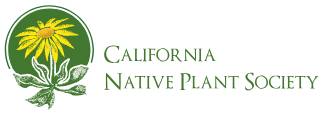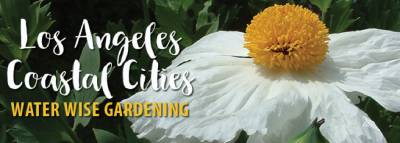The following videos were produced to assist you with your landscape transformation.
Program Intro
Welcome to the Native Parkway Program! In this video, our friends at the California Native Society introduce you the benefits of CA natives, showcase some of our favorite Long Beach native plants and breakdown how to understand your kit design.
Irrigation
Irrigation is a key component of maintaining the health of your plants. Unsure of how much you should be watering? In this video the California Native Plant Society explores the different types of efficient parkway irrigation and addresses the typical watering needs of CA native plants.
Installing your Parkway
Installing your parkway may seem intimidating. In this video, our friends at CNPS share their best tips on installing plants and stepping stones, and guidelines for making sure that your parkway project complies with Long Beach City Code.
Care & Maintenance
Congratulations! You now have your own native plant parkway. In this video, CNPS touches on all of the basic needs (watering, pruning, mulching) to keep your new native parkway looking sharp!
Virtual Workshop #3: Planting for a Successful Habitat with Cris Sarabia
Welcome to our third workshop “Planting for a Successful Habitat”, hosted on 4/28/21! Our presenter is Cris Sarabia, Board President of CNPS and Conservation Director of the Palos Verdes Peninsula Land Conservancy. He shares his expertise on how to establish California native plants in your garden.
Removing your lawn correctly is a critical step to creating a beautiful and sustainable native plant parkway. There are many effective ways to remove turf, but choosing the proper method for your site will depend on a close analysis of what type of turfgrass you have. In Long Beach, you’re most likely to find a mix of perennial grasses and the inevitable presence of different weed species. A great way to identify what you will be working with (or against) is to dig out a sample and take it to a landscape professional to help ID your sample. Here are few methods to approach turf removal in your parkway: (be sure to check out socalwatersmart.com for some awesome tutorials and how to information for each turf removal method)
Mechanical Sod Removal
If you plan to remove a large area of sod, you may be able to rent a mechanical sod cutter at a local tool supply house. It requires some strength and control to run, and you may want to hire a professional if your turf area is large enough to warrant its use. If you want to do the job yourself, each motorized cutter comes with its own operation manual that contains specific directions for using that machine. So, always read those directions before you begin and exercise caution and safety when operating.
Sheet Mulching
Sheet mulching has many advantages and is a sustainable approach to removing your lawn. This method minimizes weeds, improves soil structure, increases plant health, eliminates gas emissions, and produces zero green waste by utilizing a layering system. Layers of organic weed barrier (such as cardboard), compost (optional), and a 4”-thick layer of mulch will create a barrier that kills grass, prohibits weeds, and fortifies your existing soil — all without having to haul material off to the landfill. It can be done any time of the year, but is best to do when the lawn is actively growing. You’ll typically need to leave the sheet mulch in place for at least 1-3 months for cool season grasses, and 3-8 months for warm season grasses.
Solarization
Solarization involves heating the soil by covering it with a clear plastic tarp for four to six weeks during a hot period of the year. The plastic sheets allow the sun’s radiant energy to be trapped in the soil, heating the top 12 to 18 inches and killing a wide range of soilborne pests, such as weeds, pathogens, nematodes, and insects.
Watering
To help your plants get established, water like you’re Mother Nature! Water deeply and infrequently. Soil should become moderately dry between watering so the roots are not prone to rot. A general rule of thumb is to water 1x week for the first month, then every other week for the second and third month. By the fourth month, you should only be watering 1x month.
After about six months to a year, the plants should be reaching establishment, and you can often wait longer between watering. Be sure to watch your plants and make sure they aren’t drooping or turning yellow. Overwatering and underwatering can show these similar signs. You may need to dig a few inches down into the root zone of the plant to check the moisture of the soil so you know how to adjust your watering. Remember that native plants are adapted to winter rainfall and summer dry periods. If summer watering is really needed, water only once a month with a deep soak on a cool day.
Mulching
As needed, replenish mulch to create a 2-3” layer. You should only need to do this about once a year. Long Beach Office of Sustainability offers free mulch to Long Beach residents. Visit their website to find locations for free pick-up, or to see about scheduling a delivery. Make sure to choose 2-3” wood chips that have a consistent look with minimal green material. If you prefer a more decorative aesthetic, local garden centers offer a wide variety of options. Avoid synthetic rubber mulches or varieties that have been dyed, as they may contain harmful chemicals or materials.
Pruning
Native plants require minimal pruning if the garden is designed well and plants are spaced appropriately. If necessary, most trees and shrubs may be pruned right after flowering. Remove no more than 10 – 25 percent of live foliage at a time. Pruning young trees can establish good structure later, but try to preserve the fruits for decoration — and for wildlife.
Pests and Weed Control
Keep an eye out for those pesky weeds! If you spot any weeds in your parkway it is best to address it right away. Neglecting to remove weeds at first sight can quickly result in a takeover of your garden and lead to more maintenance in the future.
Healthy native plants have fewer pests than traditional landscaping plants. Learn to recognize good pests from bad pests, and practice integrated pest management to help you choose the best pest control method. Remember that a munched leaf is not necessarily a bad thing. It can be a sign you are feeding local insects, like our western monarchs, that depend on native plants for their survival. Visit CNPS.org to learn more about pests and how to support beneficial insects in your garden.

Since 1965, the California Native Plant Society (CNPS) has been a leading voice in plant science and native plant appreciation, making it one of the foremost native plant organizations in the world. CNPS is dedicated to conserving California native plants and their natural habitats, while increasing the understanding, enjoyment, and horticultural use of native plants. The California Native Plant Society maintains the calscape.org database, which is a great resource for selecting and finding additional native plants to add to your parkway.

In partnership with other local water utilities, the Long Beach Water Department utilizes sm.watersavingplants.com for reference on thousands of species and varieties of water efficient plants. Native plant species can be found with a “Cal Native” mark on the bottom corner of the plant profile image and can be searched for by plant type.